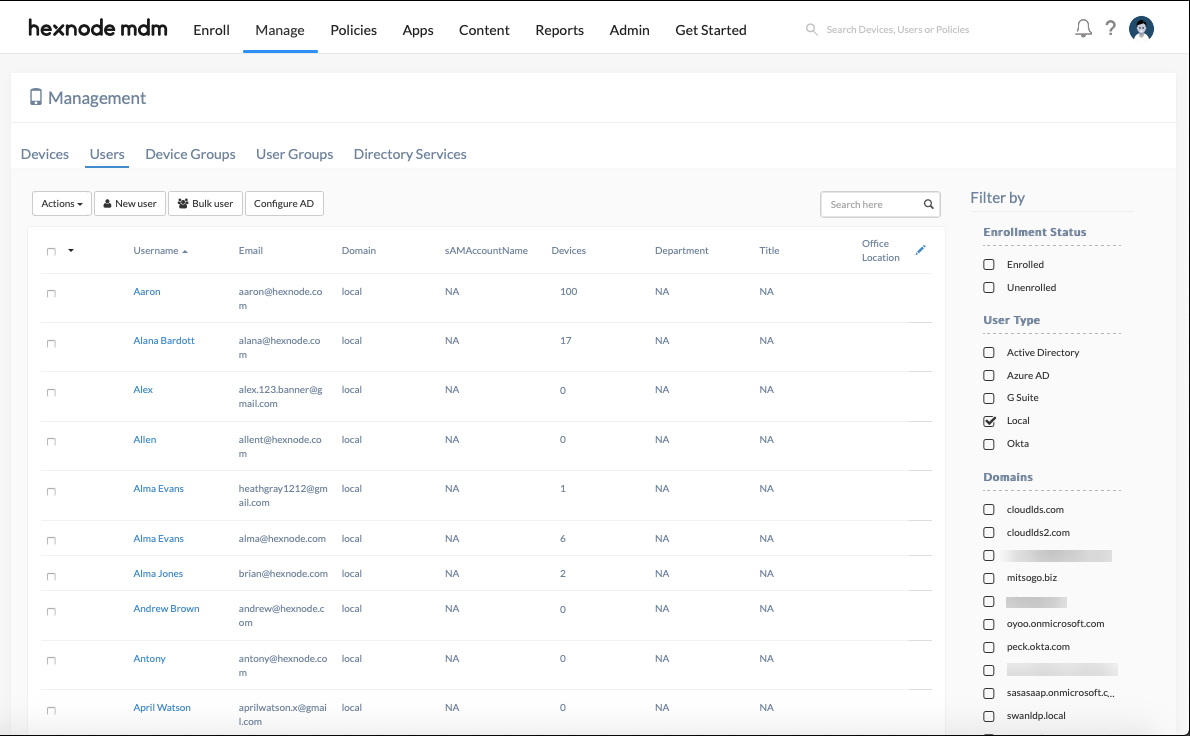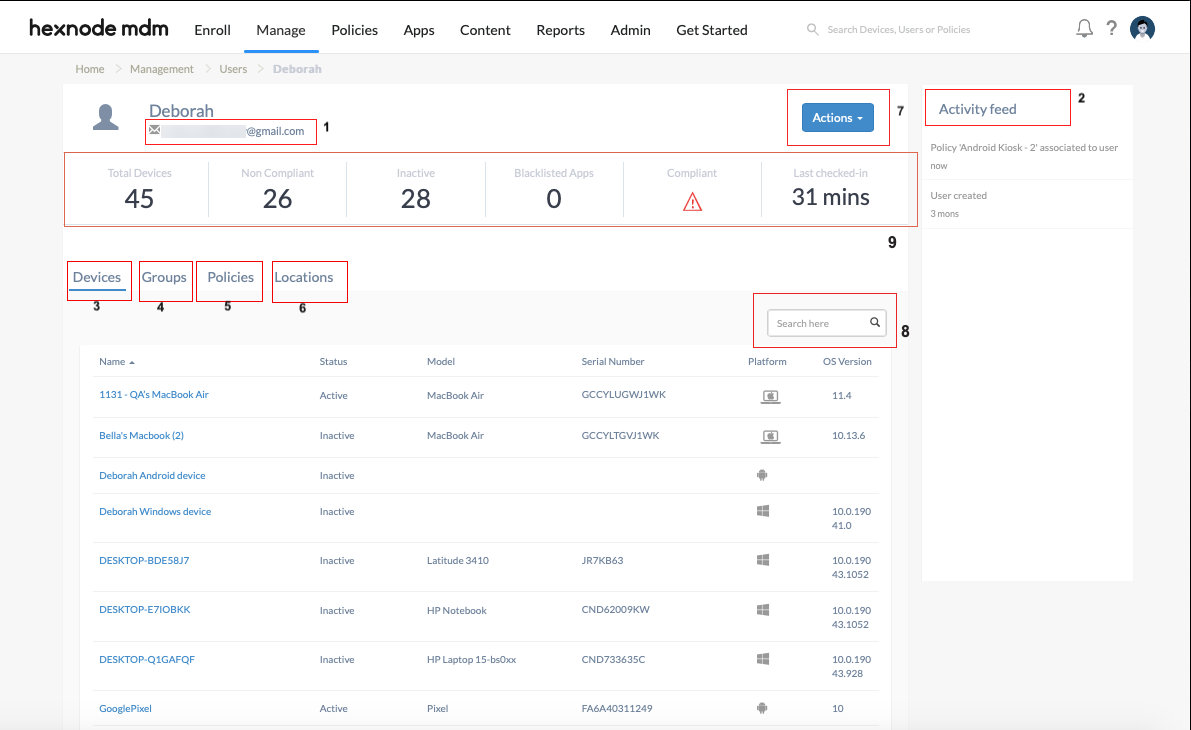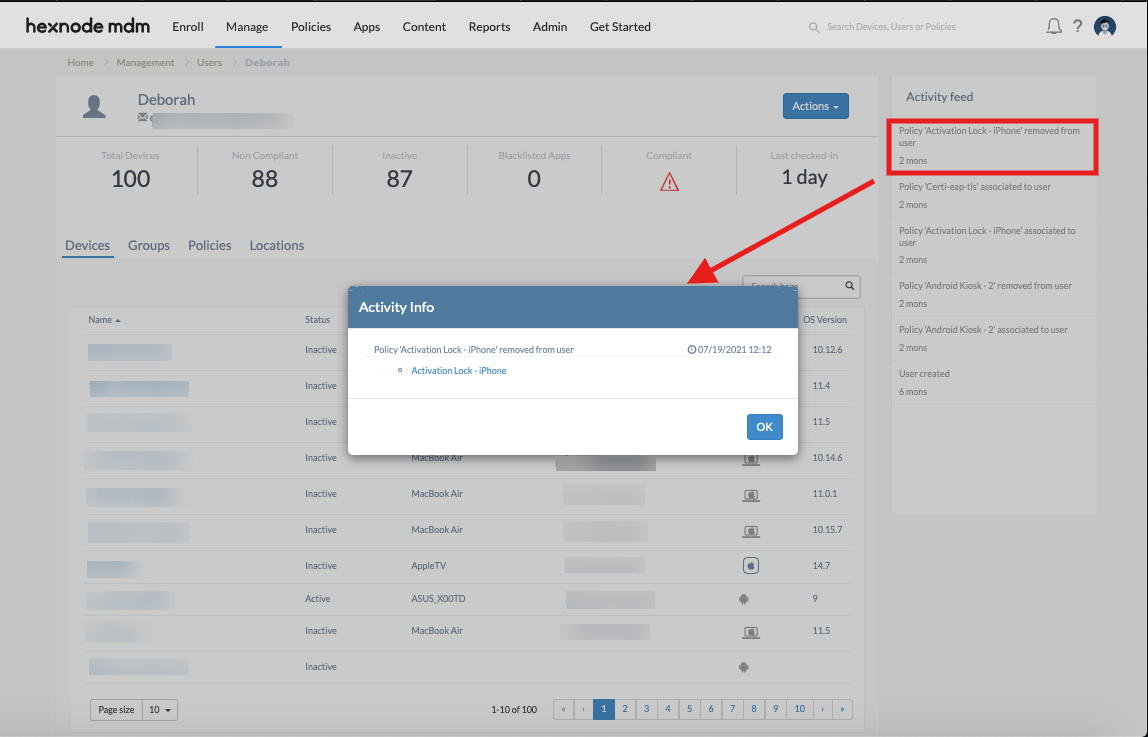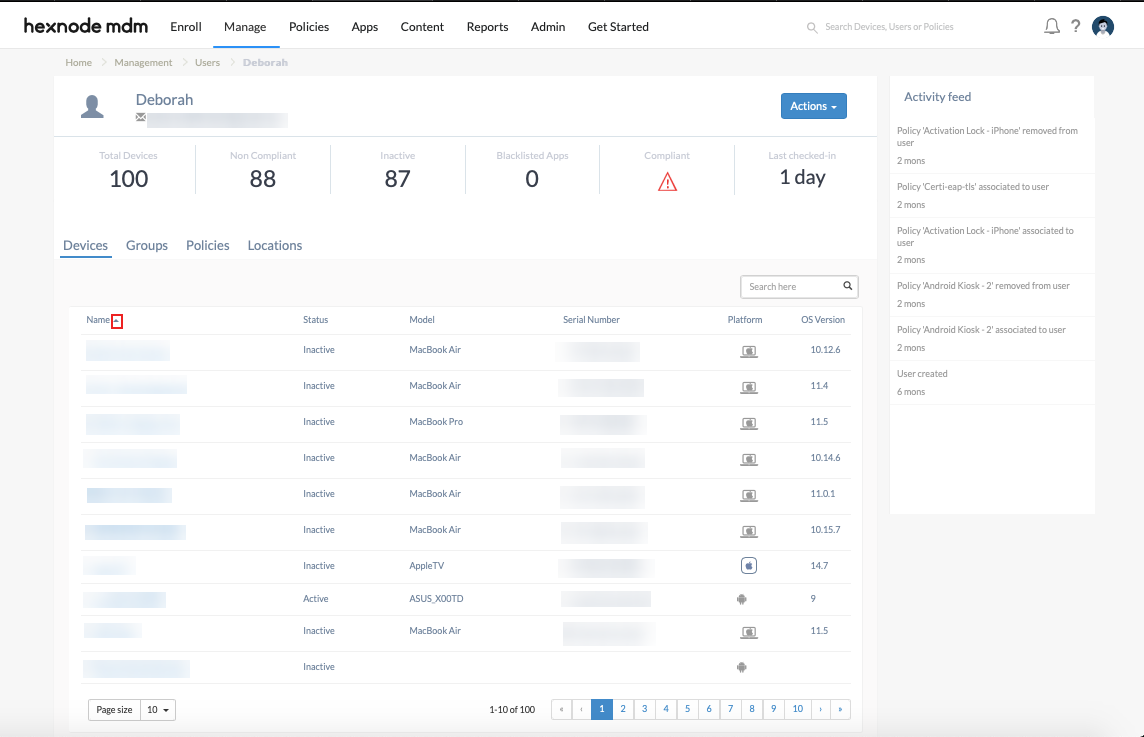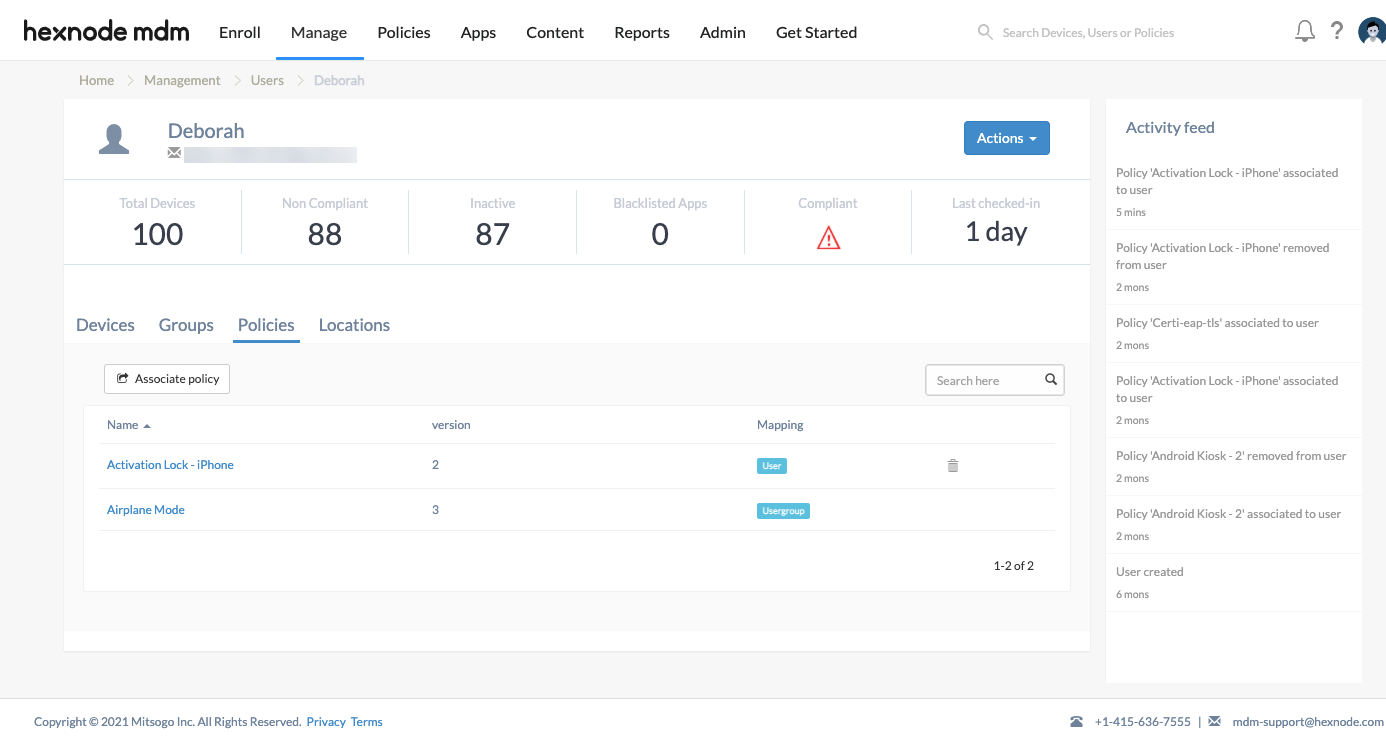Category filter
Get to know all about User details page of Hexnode
Hexnode makes user management a cakewalk for any organization’s IT department. With Hexnode, administrators can effortlessly add, modify, group and delete users. Furthermore, Hexnode presents the details of all the users in a comprehensive manner enabling the admin to keep tabs on the users quickly.
Adding Users
User management begins with adding users to the UEM console. Once users are added to the console, the admin can assign devices, policies, apps, etc. In addition, Hexnode allows the grouping of users. This feature enables the admin to perform specific actions on the users as a group.
The process of adding users to Hexnode was designed to make it convenient for the administrators. An admin can:
- Import users from directory services like AD, Microsoft Entra ID, Google Workspace, and Okta.
- Create local users from the Hexnode console.
- Add users through CSV file.
Viewing User details
Once users are added, the admin can view the user details under Manage > Users.
To get a more comprehensive view of the enrolled users, simply click on the user’s name.
The admin can view everything related to the user here. The page displays:
- The email address of the user, which is below the user’s name.
- Activity Feed – It lists activities that involve the user. For example, if a policy has been associated with the user, if an associated policy has been removed etc. Click on each activity listed to know the date and time when the action took place.
- Devices – All the devices enrolled with the user will be listed along with their Status, Model, Serial Number, Platform and OS Version under this sub-tab. The admin can use the arrow next to the Name of the device to display all the devices in the ascending or descending order of device names.
- Groups – If the user belongs to any group, the group name will be visible under this sub-tab. The admin can also see the group’s description and the timestamp of when the group was created.
- Policies– This tab displays the policies associated with the user. The version, along with the mapping of policies will be displayed here. Version indicates the number of times the policy was modified. The mapping shows how the policy is associated with the user. If the policy is associated directly with the user, the Mapping will be shown as User. These policies can be disassociated from the user by clicking on the Trash icon. If the policy is associated with the user’s group, the Mapping will be shown as Usergroup. These policies cannot be disassociated from the user from this tab. Also, the admin can instantly associate policies with the user by using the Associate Policy button.
- Location – The last known location of all the devices associated with the user will be displayed. Apart from being displayed as a list, the location will also be illustrated on a map. Clicking on a particular location in the list will pinpoint the location on the map. The location will be shown on the default map of Hexnode. The admin can also switch to Google Maps on integrating Hexnode with Google maps API.
- Actions – Admins can perform critical actions on devices using this button. These actions prove to be very useful when the admin is not in a position to physically access all the devices.
- Search bar – Based on the sub-tab chosen, the admin can search for any device, policy or group related to the user.
- Device details – This page also has a ribbon that provides a quick view of important information. The first column displays the total number of devices associated with the user. The second column shows how many devices out of the total devices are not compliant with the rules laid down by the organization. The third column displays the number of devices that are not reporting to Hexnode. The fourth column contains the number of blocklisted apps present on the user’s devices. The fifth column will have a green tick if all the devices are compliant. It will have a red exclamation mark to indicate that the user has non-compliant devices. The last column shows when the user has last reported to Hexnode.
